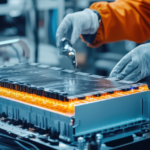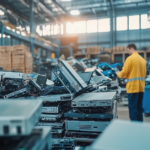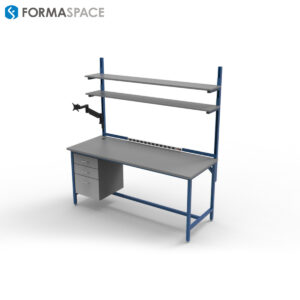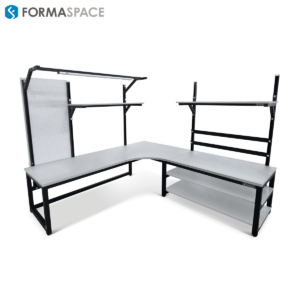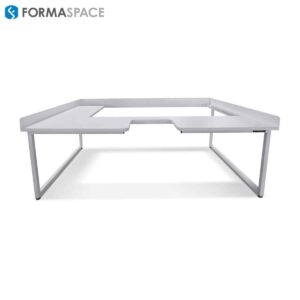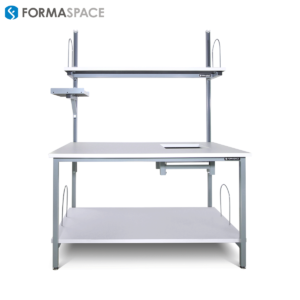Part Two in our series, Make Formaspace part of your lean manufacturing team. In this installment, we’ll look at how the pursuit of quality has roared back in American Manufacturing — thanks in part due to the adoption of lean manufacturing techniques. Where we left off in our first article in this series, way back in 1984, American automotive manufacturers found themselves far behind the Japanese in manufacturing quality.

What a Difference 2 Decades Makes
Since that time, the manufacturing quality principles of the Toyota Production System (TPS) have been widely adopted under the moniker lean manufacturing and whole armies of quality and efficiency experts have taken root in American manufacturing. Today these manufacturing efficiency and quality improvement programs have multiplied: Six Sigma, SCOR from Supply Chain Council, World-Class Manufacturing (WCM) at Fiat Chrysler Automobiles, Continuous Improvement (CI) and Total Quality Management (TQM) are just a few.
The Focus on Quality has Produced Measurable Results
Consumer Report’s Car Brand Perception Survey puts Toyota, Ford, Honda, and Chevrolet as the top brands sold in the US. (Telsa is on the rise. Ironically it’s manufactured in the old NUMMI factory in Fremont, California.)
- Today Honda is producing so many vehicles in the US that it is now a net U.S. exporter.
- JD Powers awarded the Toyota factory in Indiana its Platinum Plant Assembly Line Quality Award for producing models that yield the fewest defects or malfunctions.
- JD Powers also awarded General Motors eight model segment awards, including five for Chevrolet: 2013 Chevy Impala, Silverado HD, Tahoe, Camaro (tie) and Avalanche (tie).
It’s safe to say American-made automotive manufacturing quality has roared back.
The Power of Increased Productivity
But there’s more to the story than just quality improvements. Lean manufacturing techniques also spur productivity improvements which can take the form of increased profits as well as improvements to the product itself (to increase product sales and/or market share.) In 2014 Chevrolet introduced its ninth generation Impala. Let’s take a look and see how it compares to the model from 1974.


Feature Comparison of 1974 Chevrolet Impala with 2014 Model
| Chevrolet Impala | 1974 Model | 2014 Model |
| Price | $4,215 ($20,000 in today’s dollars) | $27,670 |
| Mileage | 10.6 mpg | 23.7 mpg |
| Weight | 4,343 pounds | 3,680 pounds |
| Engine | 5.7 Litre V8 | 2.5 Litre 4 |
| Transmission | 3 speed automatic | 6 speed automatic |
| Drag Coefficient | 0.55 Cd | 0.3 Cd |
| Air Conditioning | Optional Extra | Included |
| Air Bags | Not Available | Included |
| Entertainment System | Optional Extra | Included (CD, Satellite, HD Radio, iPod) |
Sources: NADA, Wikipedia, Edmund’s, Oregon State Inflation Rates The 2014 Impala’s manufacturer’s suggested list price is $27,670. Careful reading of the table shows that it costs $7000 more (about $1500 in 1974 dollars) than the 1974 model. But we have to remember that in those days, nearly every extra feature was an option. By the time you added air-conditioning, power seats and windows and an entertainment system, you could easily make up the difference.
So for this comparison, we will say the price is basically equivalent. What the consumer gets in 2014 however is a radically improved automobile. The new Impala delivers more than double the fuel economy, and it includes a slew of safety features, such as anti-lock brakes, traction and stability control, front and side airbags. It also includes what would have been considered space-age technology back in 1974 (the era of CB radio) -— satellite and HD radio as well as GM’s OnStar service which provides automatic crash notification with emergency assistance, remote door unlocking and the ability to track your vehicle if it is stolen.
Increased Productivity in Consumer Electronics
While the improvement between a 1974 and 2014 model Chevrolet is impressive, the world of the consumer electronics has progressed even faster in a shorter time frame. Steve Cichon in TrendingBuffalo made a startling comparison recently. He was looking at a February 1991 edition of the Buffalo News when he spied a full-page advertisement from RadioShack. What caught Steve’s eye was how many products for sale in the ad have been integrated into other devices, like the iPhone in his pocket. For example, the iPhone incorporates these devices:
- $1599 Tandy 1000 TL/3 computer
- $799 VHS Camcorder
- $199 Mobile Cellular Telephone
- $159.95 Deluxe Portable CD Player
- $99.55 10-Channel Desktop Scanner
- $49.95 Phone Answering Machine
- $29.95 20-Memory Speed-Dial phone
- $29.95 Handheld Cassette Tape Recorder
- $13.88 AM/FM clock radio
- $11.88 All weather personal stereo
- $7.88 In-Ear Stereo Phones
- $4.88 calculator
Together these devices, which retailed for over $3,000 in 1991 (about $5,250 in today’s dollars) can all fit in your pocket for under $600.
But Wait a Minute! Isn’t the iPhone Manufactured in China?
You might say that the productivity gains illustrated by the iPhone don’t have a place in an article about quality American manufacturing. After all, it’s true the Apple iPhones final assembly is performed by Foxconn in China. But as this amazing graphic from Financesonline shows, the iPhone is made up of components manufactured all across the globe, including many here in the US. For example, the A-series SoC processor chip for the iPhone is manufactured by Samsung right here in Austin, Texas. And the impact-resistant Corning Gorilla Glass faceplate for the iPhone is manufactured in Kentucky.
Apple CEO, Tim Cook, addressed this issue in a 2012 interview with Brian Williams, and he had an interesting point of view:
“The consumer electronics world was really never here,” Cook stated. “It’s not a matter of bringing it back, it’s a matter of starting it here.” He went on to promise: “we’ve been working for years on doing more and more in the U.S. Next year, we’re going to do one of our existing Mac lines in the United States.”
Mac Pro Manufactured Here in Austin, Texas
That promise has come true. This past December, Cook announced: “We have begun manufacturing the Mac Pro in Austin…It’s the most powerful Mac ever.” “We don’t want to just assemble the Mac Pro here, we want to make the whole thing here. This is a big deal.” Indeed it is!
In Our Next Installment, We’ll Look at How You Can Kick Off a 5S Quality Program at Your Facility
Formaspace is a part of the quality revolution in American manufacturing. We can help you make your workspace, laboratory, manufacturing facility, school or government/military facility more productive. We create custom furniture solutions (workbenches, laboratories, casework, sorting tables) that boost your productivity and quality — and save you money in the process. Plus it’s protected by our famous 3 work shift, 12 year guarantee, the best in the furniture industry. Call us now at 1-800-251-1505 or contact a representative online.




